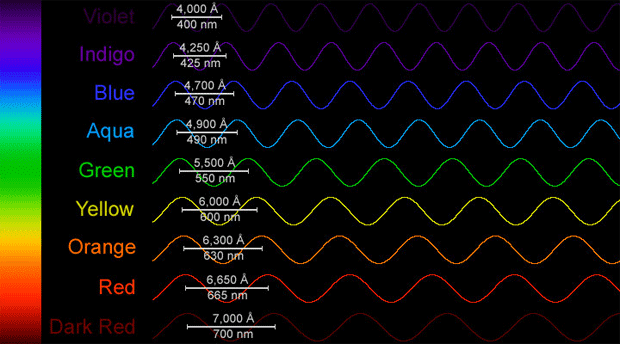Have you ever stopped to consider how our perception of color is interwoven with the very nature of light? We see color because certain wavelengths of light are absorbed by objects, while others are reflected back to our eyes. But what happens when light is not reflected back? What secrets lie hidden within the realm of colors that we cannot see through?

Image: unordinarys.blogspot.com
This intriguing question leads us to the fascinating world of opaque colors. These are the hues that block light from passing through, creating a barrier between us and whatever lies beyond. From the solid blackness of a raven’s wing to the vibrant, rich tones of an emerald jewel, opaque colors hold a captivating power, both visually and conceptually. In this journey, we will unravel the mysteries of opacity, delving into its science, artistry, and profound impact on our visual world.
The Science of Opaque Colors: A Look Behind the Veil
Before we embark on an artistic exploration of opaque hues, it’s important to understand the science that underpins them. Simply put, opacity is the measure of how much light a substance allows to pass through. Transparent materials, such as glass, allow most light to pass through, while translucent materials, like frosted glass, allow some light to pass through but scatter it, blurring the image on the other side. Opaque materials, however, absorb or reflect all light, leaving nothing to pass through.
This absorption or reflection of light is what gives opaque colors their distinct appearance. Imagine holding a red apple – the red pigment in the apple absorbs all colors except red, which is reflected back to our eyes. This same principle applies to all opaque colors – their unique hues are a result of selective absorption and reflection of light.
Opaque Colors in Art: A Palette of Expression and Depth
Historically, opaque colors have been integral to the art world, allowing artists to capture the richness and depth of their subjects. Painters like Rembrandt and Vermeer utilized opaque paints, often oil-based, to create dramatic contrasts and textures. The layering of opaque paint created depth, shadows, and a sense of dimensionality that imbued their canvases with a profound sense of realism.
Opaque colors are also essential for creating vibrant, solid colors in various artistic mediums. In textile dyeing, opaque dyes are used to create the bold, vibrant colors we see in fabrics, while in ceramics, opaque glazes are applied to give pottery a smooth, glossy finish. The impact of opaque colors in art cannot be overstated. They are the foundation upon which countless masterpieces have been built, shaping our understanding of color, depth, and artistic expression.
Exploring the Psychology of Opaque Colors: Shades of Emotion and Meaning
Beyond their aesthetic appeal, opaque colors hold a powerful psychological impact. Black, often associated with mystery, power, and the unknown, can evoke feelings of both awe and apprehension. White, on the other hand, symbolizes purity, innocence, and new beginnings. These are just a few examples of how opaque colors, through their connection to our cultural experiences and subconscious, trigger a complex interplay of emotions and interpretations.
The perception of opaque colors can also be influenced by cultural and personal associations. For instance, in some cultures, red is associated with passion and energy, while in others, it may represent mourning or danger. Understanding these subtle, nuanced associations is crucial in comprehending the full impact of opaque colors on our perceptions and emotions.

Image: www.snimanje-aure.blogspot.rs
The Intriguing World of Opaque Objects: More Than Just Color
While opaque colors often come to mind when we think of objects, the concept of opacity extends beyond the realm of color. There is also the category of opaque objects, which are simply those that do not allow light to pass through them. These objects can be composed of various materials, and their opacity can vary depending on their thickness, density, and composition.
From opaque walls that provide privacy and protection to opaque fabrics that keep us warm and comfortable, these objects play a crucial role in our daily lives. They shape our environment, influencing our sense of space, privacy, and security. Opaque objects also have a profound impact on how we interact with the world around us, influencing our perception of light, shadows, and the very nature of visibility.
Colors That You Cannot See Through Are Called
Unveiling the Secrets of Opacity: A Path to Deeper Appreciation
The next time you see a vibrant red rose or a sleek, black car, remember that the colors we perceive are not just a simple reflection of light – they are the result of a complex interplay of light absorption, reflection, and our own perception. Embrace the wonder of opaque colors, their rich history, and their profound connection to our emotions and experiences.
By exploring the world of opaque colors, you will gain a deeper understanding of how they shape our world, inspire our creativity, and influence our perception. So continue to observe, explore, and appreciate the beauty of the colors that we cannot see through. They are the hidden threads that weave together our visual world, reminding us of the endless possibilities within the spectrum of light and color.

:max_bytes(150000):strip_icc()/OrangeGloEverydayHardwoodFloorCleaner22oz-5a95a4dd04d1cf0037cbd59c.jpeg?w=740&resize=740,414&ssl=1)




